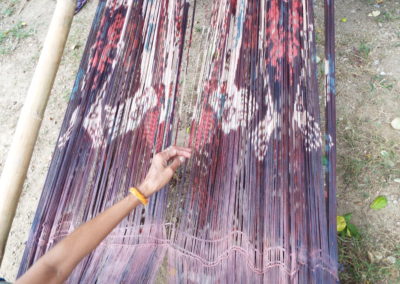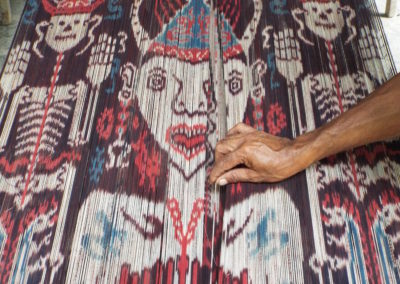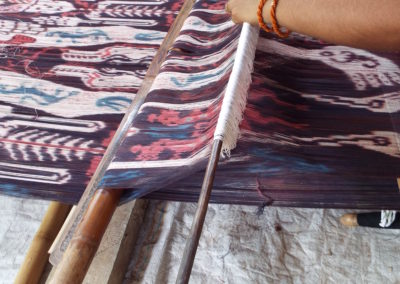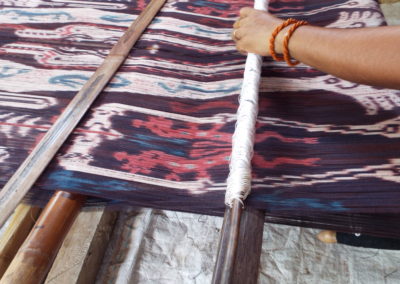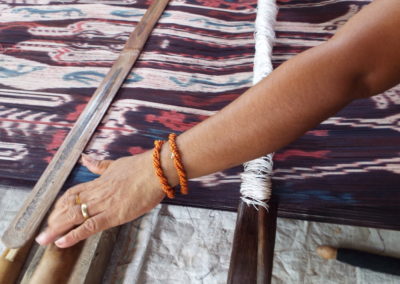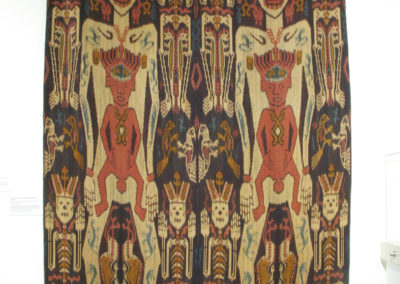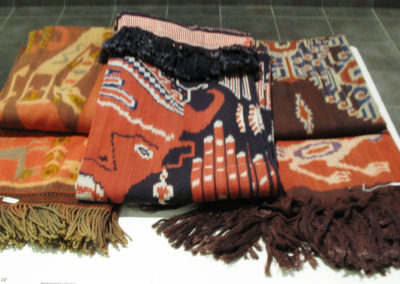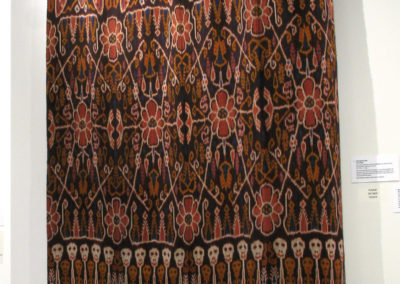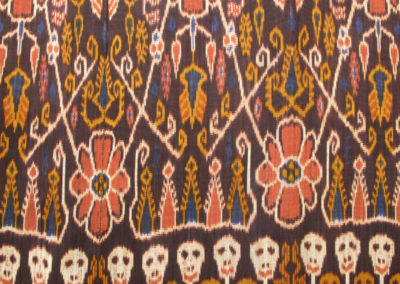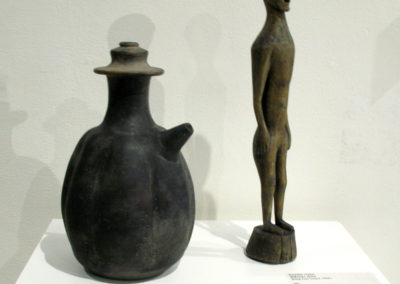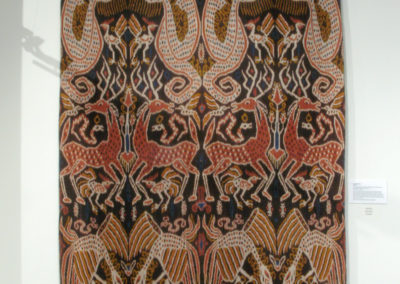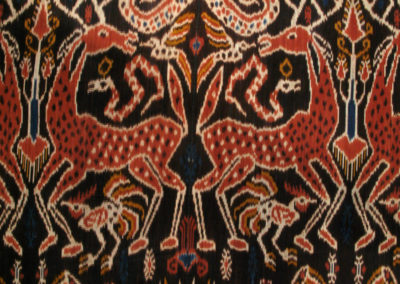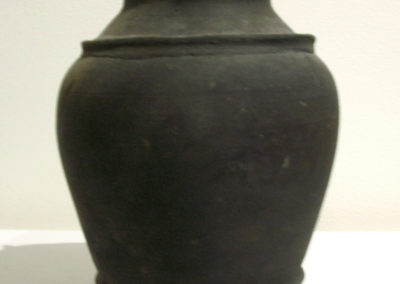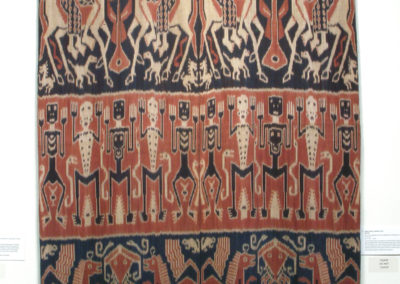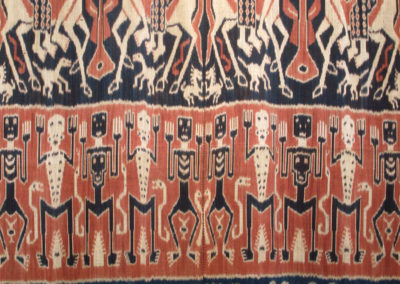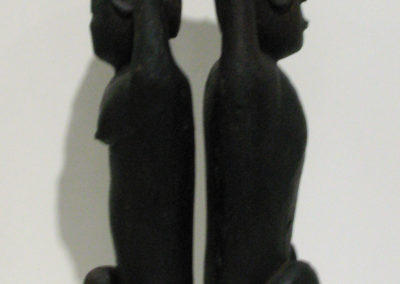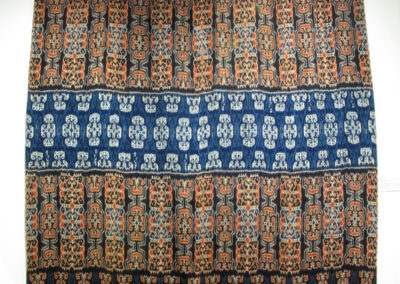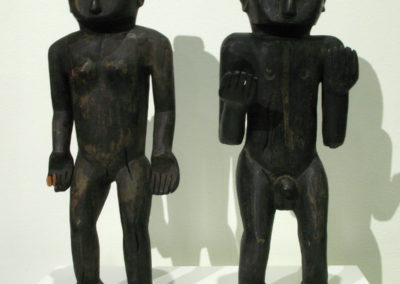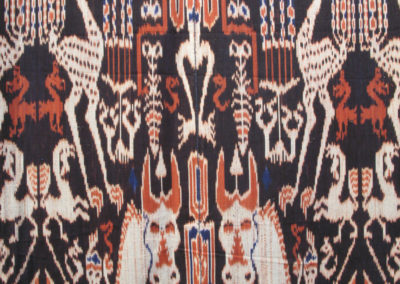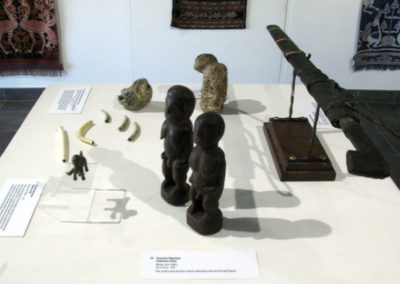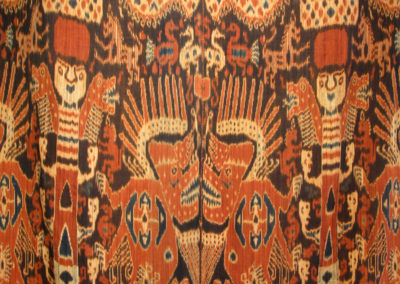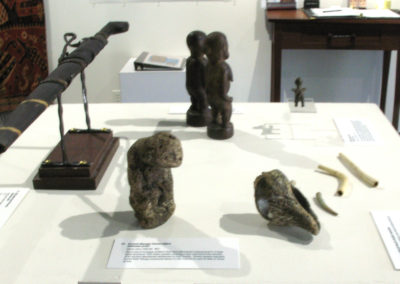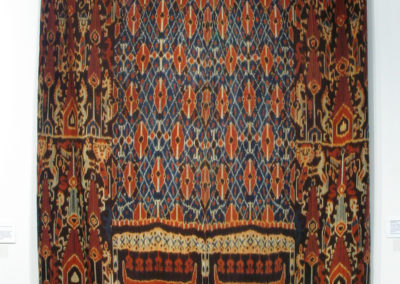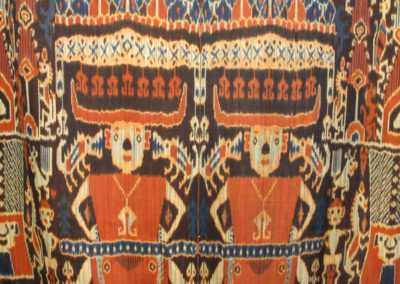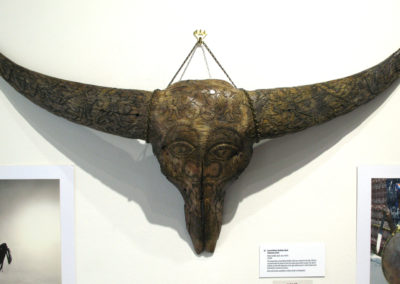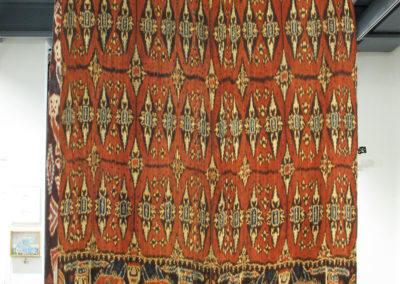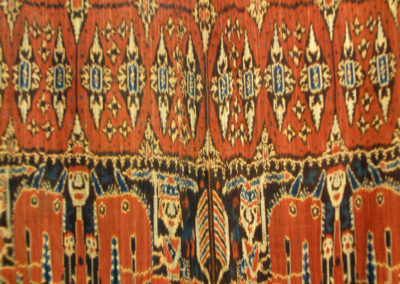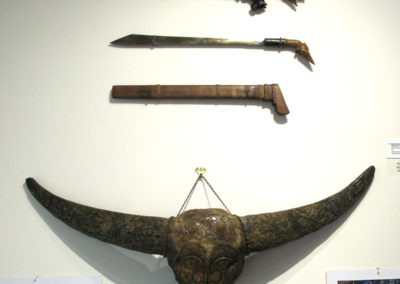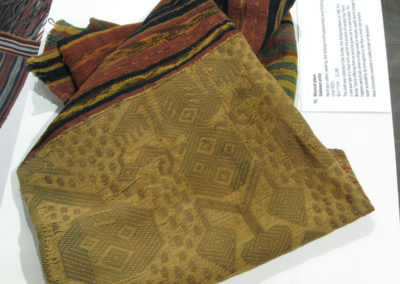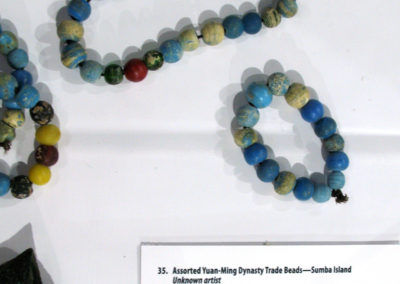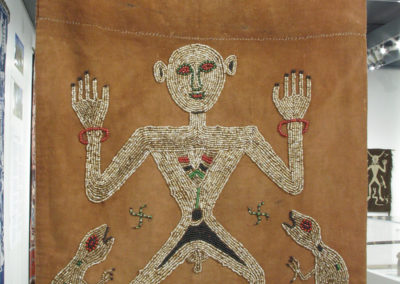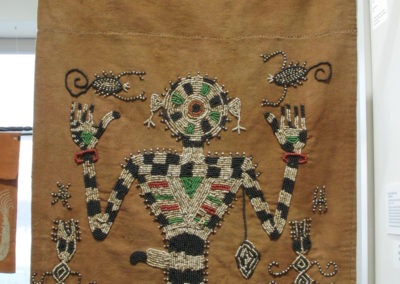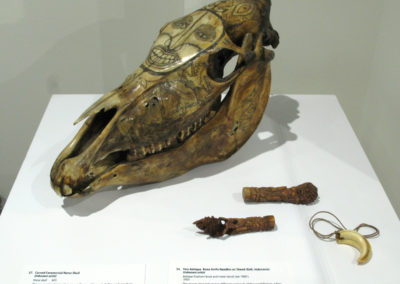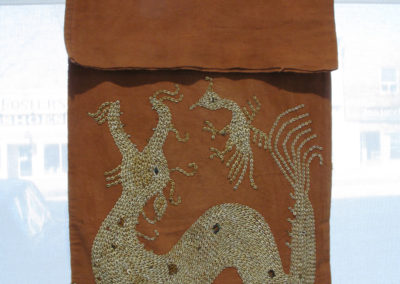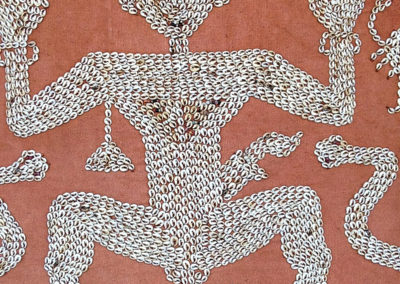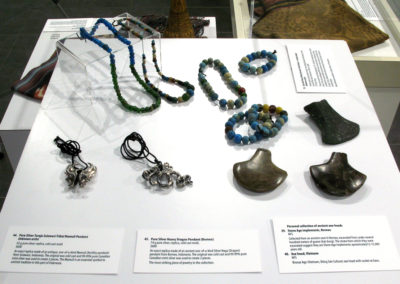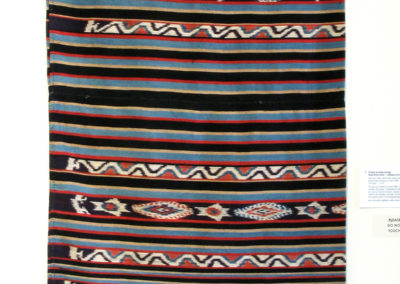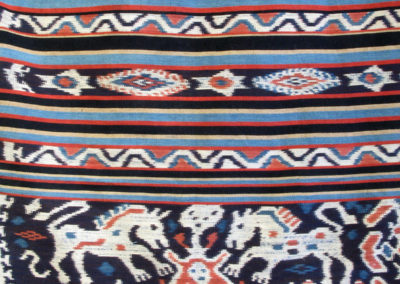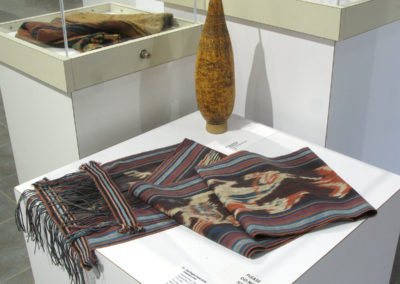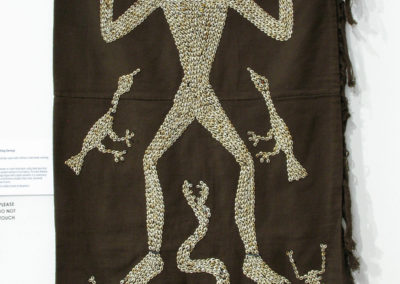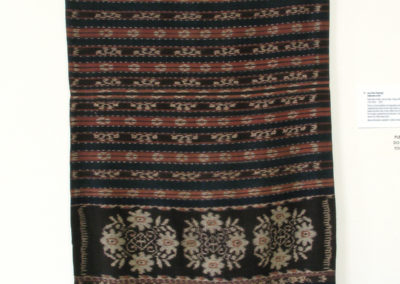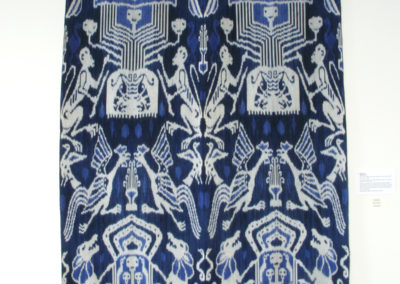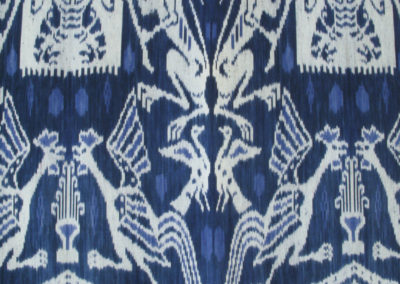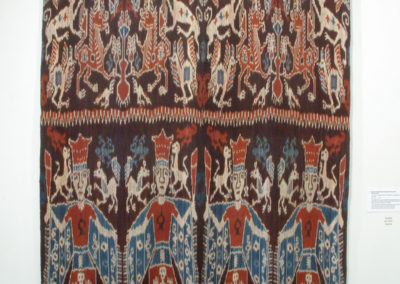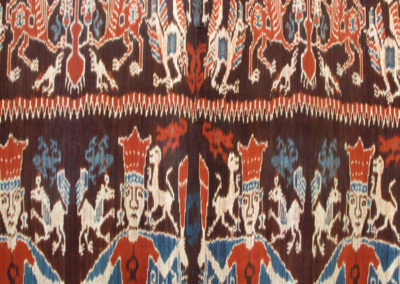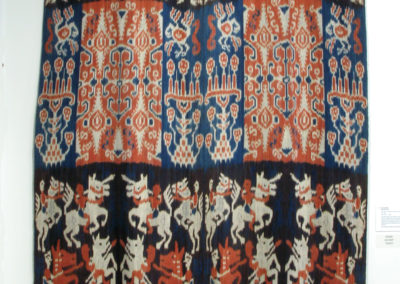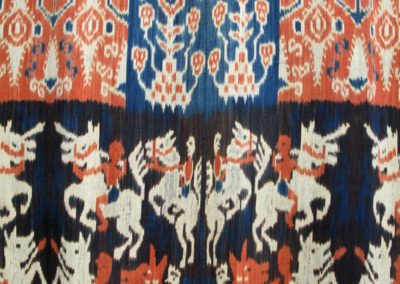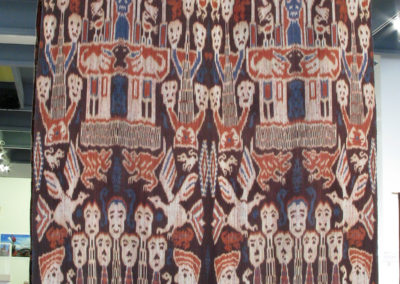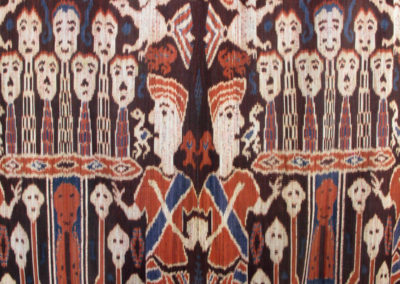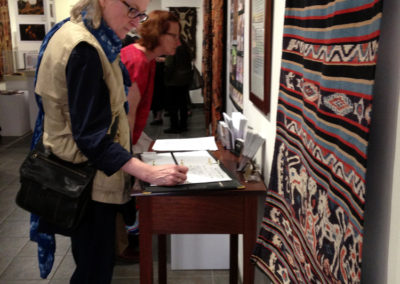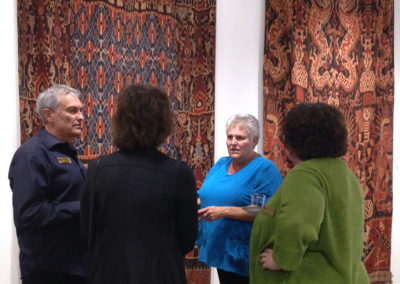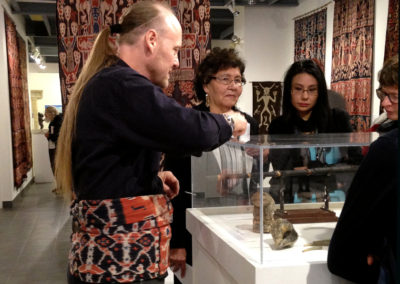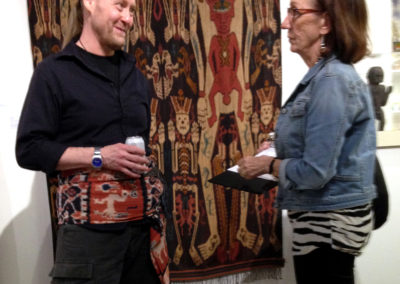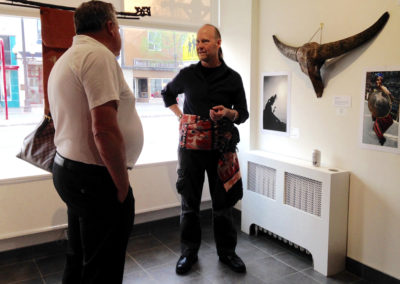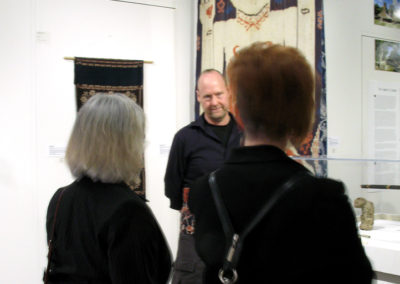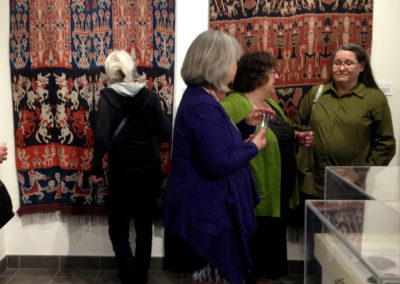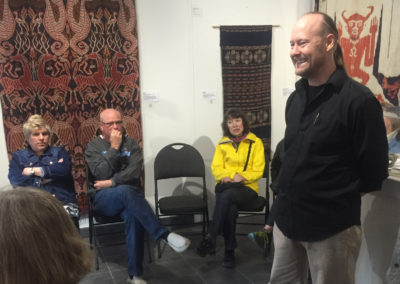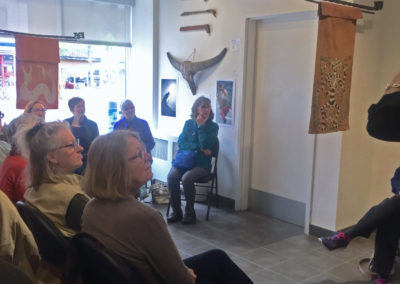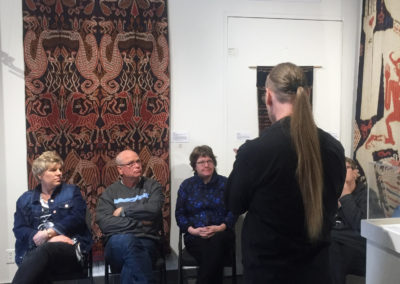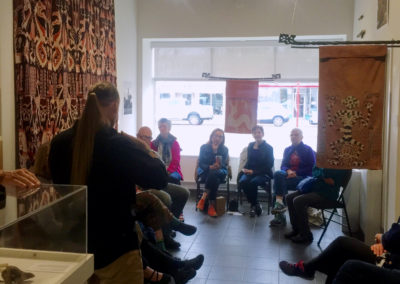
Exhibition: April 29 to May 28, 2016
Reception: Friday, May 6, 7 – 9 pm
Q & A with the Collector Geoffery Bendel: Monday, May 9, 10:30 am & 1:30 pm
The Saskatchewan Craft Council Gallery presents an exclusive exhibition of rare textiles from the isolated island of Sumba, Indonesia. Shown publicly for the first time!
Collector Geoffrey Bendel has accumulated this incredible collection since the mid 1980s and says: “These textiles have an amazing impact upon those who see them. It is my desire not only to provide a wonderful viewing experience, but also to show the techniques involved in their production.” Read Geoffery’s Collector’s Statement.
The curator at the Jakarta Textile Museum has described this as one of the larger and more important private collections of Sumbanese textiles and artifacts ever assembled.
This display of rare Royal textiles features the very finest Ikat, created for aristocratic ceremonial purposes. The Ikat textile process is a complex and technical tradition practiced across millennia through Asia and the Middle East. The people of Sumba have refined this complex process. It can take up to two years to complete a piece. The Saskatchewan Craft Council is honoured to present these exquisite tapestries and weavings made by indigenous women — who practice Marapu, Sumba’s ancestral religion.
Along with the educational components in this exhibition, there are also numerous artifacts from Sumba including carvings, swords, beads, statues and pottery. It is a one-of-a-kind, must-see show!
Most of the work in this exhibition are for sale. The proceeds will help fund the continued production and protection of this fascinating technique and cultural form. Bendel’s hope is to work with established members of the Ikat weaving community, focusing on distribution and fair pay, locating materials and dyes for weavers, as well as creating promotional projects.
The artists of a number of pieces in this exhibition are listed as “Unknown.” Many factors have contributed to this gap in information: a tendency for the makers of textiles to be historically forgotten or left out; a lack of records; the practice of hierarchical groups or caste systems to credit the community as a whole—rather than focusing on the maker as an individual. We want to encourage visitors to remember that despite the title of “Unknown,” these works were made by real persons, by experienced hands. Unknown does not equate to No One. We wish for visitors to recognize the labour and accomplishment that these women, master weavers of Sumba, have employed to create such fine textiles.


